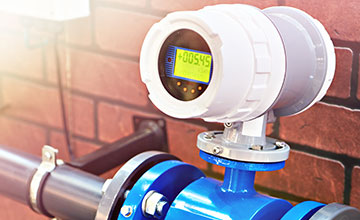Overview
This product has reached its End of Life & not recommended for new designs. Its data sheet is for reference only.
The GS12170 is a fully featured SDI/HDMI bridge chip (including backwards compatibility with the GS12070 UHD-SDI Gearbox) for SDI link conversion applications. The GS12170 can be configured to operate in one of three modes: SDI to HDMI bridge mode, HDMI to SDI bridge mode or SDI gearbox mode.
The device fully supports SDI interface standards from HD-SDI (ST 292) to UHD-SDI at 12Gbps (ST 2082-1), including all Multi-Link SDI standards at these rates. When configured for HDMI bridging, the GS12170 fully supports the HDMI 2.0 standard up to 4Kp60 4:2:2 format.
The GS12170 is the ideal solution for chip-to-chip connectivity using TMDS signaling for UHDTV products requiring a 12Gbps UHD-SDI interface. For example, add a 12Gbps UHD-SDI input interface to a UHDTV monitor simply by adding the GS12170 in SDI to HDMI Mode, with TMDS connection directly into off-the-shelf image processing ASICs.
For applications requiring multi-channel audio, the GS12170 includes a full 16-channel audio de-embedding and embedding feature. Up to 16 channels of digital audio at 48kHz sampling, or up to eight channels at 96kHz sampling, can be extracted from the input video, and output on dedicated balls in AES/EBU or I2S serial digital formats. Existing audio is also simultaneously re-embedded in the selected output interface format. Users may also choose to insert up to eight channels of new audio using dedicated audio input balls.
In HDMI to SDI Mode, the GS12170 can extract all HDMI InfoFrames, including HDR meta data. Video payload information is automatically converted to SMPTE ST 352 packets. Similarly, in SDI to HDMI Mode, SDI SMPTE ST 352 packets are extracted and converted to equivalent InfoFrames. All InfoFrame and ancillary data packets can be read via the GSPI host interface. Users can also choose to insert new SDI ancillary data packets via the GSPI.
In SDI gearbox mode, the device will automatically reorder the output serial stream according to the received ST 352 packets, and may also duplicate outputs to unused serial output ports, or route any input channel to an unused output.
The device will also automatically compensate for up to 400ns of skew between Multi-Link SDI inputs. This aids in any lane-to-lane variance introduced by cable mismatch or upstream routing and distribution equipment.
For optimal SDI performance, the GS12170 is designed to interface directly with Semtech’s UHD-SDI equalizers and cable drivers. For HDMI connectivity, the TMDS inputs and outputs are designed for direct chip-to-chip connectivity. The device can be connected to physical HDMI connectors using an HDMI re-driver device.
The GS12170 is packaged in a space-saving 12 mm by 12 mm 196-ball BGA package, and offers low power operation of less than 2W typically.
This makes the device ideal for adding UHD-SDI interfaces to existing HDMI 2.0 based UHDTV products, and for low-cost SDI/HDMI converters and extenders.
Features
- Fully standards compliant SDI interface bridging to and from HDMI 2.0
- Support for 4K video formats up to 60Hz at 10-bit 4:2:2 sampling
- Converts between Single-Link and Multi-Link SDI inerfaces from HD-SDI to 12Gbps UHD-SDI
- Three modes of operation:
- SDI to HDMI bridge mode
- HDMI to SDI bridge mode
- SDI to SDI gearbox mode
- Supports up to 16 channels of digital audio de-embedding and embedding at 48kHz or 96kHz
- Simultaneous de-embedding and embedding in all modes of operation
- Dedicated AES/EBU or I2S serial digital audio inputs and outputs
- Extraction and insertion of HDMI InfoFrames
- Extraction and insertion of SDI ancillary data packets
- Extraction and insertion of Time Code (TC) data packets
- SDI Gearbox Mode also supports all functions and features of the GS12070 UHD-SDI Gearbox
- Automatic and manual handling of SMPTE ST 352 packets
- Automatic skew compensation for multi-link SDI inputs
- Automatic input link order handling for multi-link SDI inputs
- Four 100Ω differential inputs with input trace equalization up to 12dB
- Four 100Ω differential outputs with individually selectable output swing adjust
- Single 27MHz reference clock/crystal input
- Gennum Serial Peripheral Interface (GSPI) serial control and monitoring interface
- Typical power <2W
- 12 mm x 12 mm 196-ball BGA (0.8 mm pitch)
- Pb-free, halogen-free, RoHS / WEEE compliant
| Documents | Release Date | Type | |
|---|---|---|---|
| GS12170 Datasheet | 2021-06-25 | ||
| GS12170 External PLL Selection Guide for HDMI-to-SDI Mode | 2022-12-21 | ||
| Manually Writing the GS12170 SCDC Bit Clock Ratio and Scrambling Bit | 2022-05-20 | ||
| Recommended GS12170 SDI-to-HDMI Bridge Mode Initialization | 2021-11-24 | ||
| Recommended Semtech Video Product Evaluation and Reference Design Boards | 2023-04-03 | ||
| Recommended Semtech Video Product Evaluation and Reference Design Boards | 2024-09-21 | ||
| Recommended Semtech Video Product Evaluation and Reference Design Boards | 2025-02-25 | ||
| GS12170 Product Brief | 2021-03-11 | ||
| GS12170 HDMI-to-SDI Reference Design Kit User Guide (RDK-GS12170-H2S00 & RDK-GS12170-H2S01) | 2024-01-30 | ||
| GS12170 SDI-to-HDMI Reference Design Kit User Guide (RDK-GS12170-S2H00) | 2024-01-30 | ||
| GS12170 Customer Reliability Qualification Report | 2022-02-12 | ||
| GS12170 SDI-to-SDI Reference Design Kit User Guide (RDK-GS12170-S2S00) | 2024-01-30 | ||
Applications
- UHDTV monitors & displays
- UHDTV cameras & camcorders
- SDI/HDMI converters
- HDMI extenders
- SDI I/O adapters
- SDI/HDMI switchers & routers
Inventory
| Product | Country | Distributor | Qty | Buy |
|---|
.png)

















.png)

















